An organic compound A has molecular formula C10H17Br and it is non-resolvable. A does not decolourise brown colour of bromine water solution. A on treatement with (CH3)2COK/(CH3)3COH yields B as majot product. B on treatment with H2/Pt yields (C10H16) which on treatment with CI2/hv yields three monochloro derivative. Also B on boiling with acidic permanganate solution yields C(C10H16O3)C. on heating with sodalime yields D(C9H16O).D on reducing with LiAIH4 followed by heating product with concentrated H2SO4 yields E(C9H16) as major product. E on treatment with ozone followed by work-up with Zn−H2O yields 6-Ketononanal.
Compound B is: Solution in Gujrati
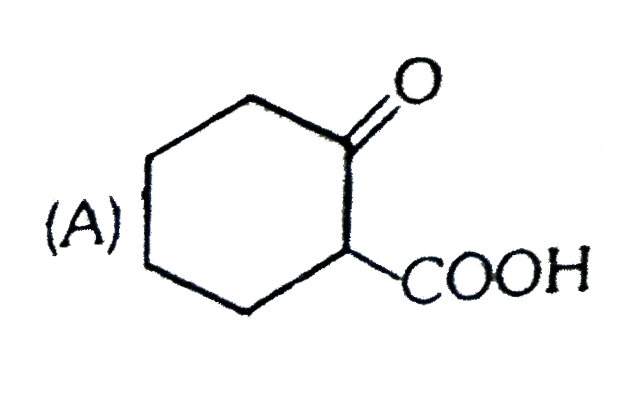
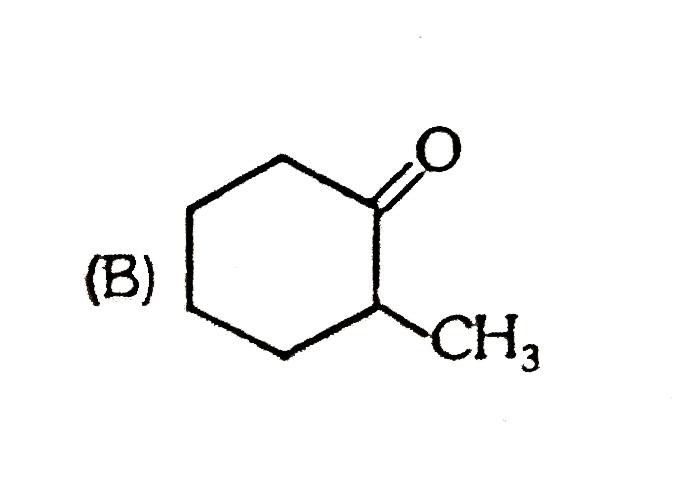
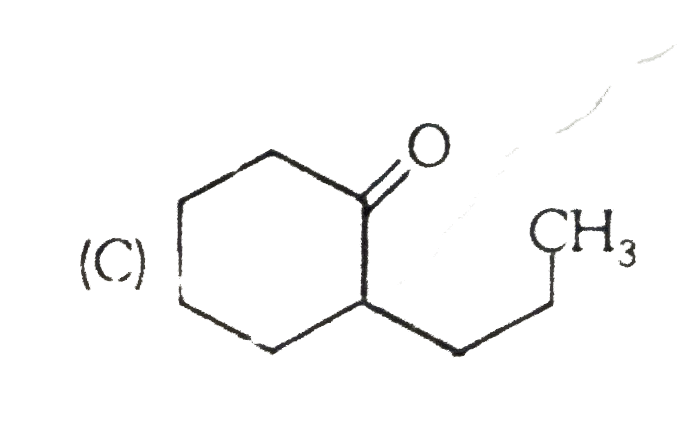
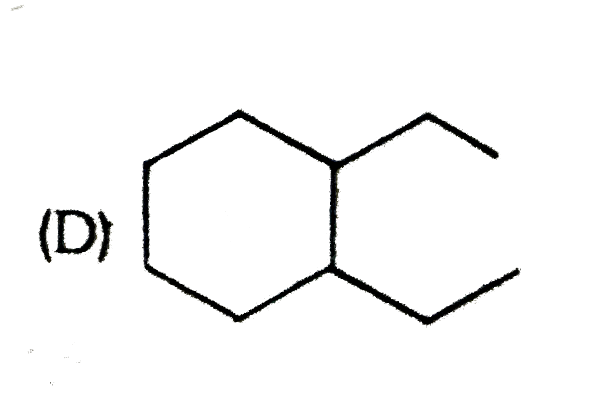
The correct Answer is:C
Step by step video & image solution for An organic compound A has molecular formula C_(10)H_(17)Br and it is non-resolvable. A does not decolourise brown colour of bromine water solution. A on treatement with (CH_(3))_(2 COK//(CH_(3))_(3)COH yields B as majot product. B on treatment with H_(2)//Pt yields (C_(10)H_(16)) which on treatment with CI_(2)//hv yields three monochloro derivative. Also B on boiling with acidic permanganate solution yields C(C_(10)H_(16)O_(3))C. on heating with sodalime yields D(C_(9)H_(16)O).D on reducing with LiAIH_(4) followed by heating product with concentrated H_(2)SO_(4) yields E(C_(9)H_(16)) as major product. E on treatment with ozone followed by work-up with Zn-H_(2)O yields 6-Ketononanal. Compound B is: by Chemistry experts to help you in doubts & scoring excellent marks in Class 12 exams.
Updated on:21/07/2023Similar Questions
An organic compound ‘A’ has molecular formula C9H13NO and it can be resolve into enantiomers. Adoes not decolourise bromine water solution. A on refluxing with dilute H2SO4, yields another revolvable compound B(C9H14O3) which give effervescence with NaHCO3. B on treatment with NaBH4 yields C(C9H16O3) on heating with concentrated H2SO4 yields ester D (C6H14O2).
Compound A on reduction with LiAlH4 followed by treatment of H2SO4 yields following compound :

Find out structure of compound 'A''
View SolutionAn organic compound ‘A’ has molecular formula C_(9)H_(13)NO and it can be resolve into enantiomers. Adoes not decolourise bromine water solution. A on refluxing with dilute H_(2)SO_(4) , yields another revolvable compound B(C_(9)H_(14)O_(3)) which give effervescence with NaHCO_(3) . B on treatment with NaBH_(4) yields C(C_(9)H_(16)O_(3)) on heating with concentrated H_(2)SO_(4) yields ester D (C_(6)H_(14)O_(2)) . Compound A on reduction with LiAlH_(4) followed by treatment of H_(2)SO_(4) yields following compound : The sweet smelling neutral compound D is
View SolutionAn organic compound ‘A’ has molecular formula C9H13NO and it can be resolve into enantiomers. Adoes not decolourise bromine water solution. A on refluxing with dilute H2SO4, yields another revolvable compound B(C9H14O3) which give effervescence with NaHCO3. B on treatment with NaBH4 yields C(C9H16O3) on heating with concentrated H2SO4 yields ester D (C6H14O2).
Compound A on reduction with LiAlH4 followed by treatment of H2SO4 yields following compound :
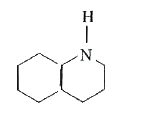
Due to reduction of optically pure 'B'two isomeric product 'C' form. Isomeric product 'C' are :
View SolutionAn organic compound A has molecular formula C10H17Br and it is non-resolvable. A does not decolourise brown colour of bromine water solution. A on treatement with (CH3)2COK/(CH3)3COH yields B as majot product. B on treatment with H2/Pt yields (C10H16) which on treatment with CI2/hv yields three monochloro derivative. Also B on boiling with acidic permanganate solution yields C(C10H16O3)C. on heating with sodalime yields D(C9H16O).D on reducing with LiAIH4 followed by heating product with concentrated H2SO4 yields E(C9H16) as major product. E on treatment with ozone followed by work-up with Zn−H2O yields 6-Ketononanal.
Compound B is:
View SolutionAn organic compound A has molecular formula C10H17Br and it is non-resolvable. A does not decolourise brown colour of bromine water solution. A on treatement with (CH3)2COK/(CH3)3COH yields B as majot product. B on treatment with H2/Pt yields (C10H16) which on treatment with CI2/hv yields three monochloro derivative. Also B on boiling with acidic permanganate solution yields C(C10H16O3)C. on heating with sodalime yields D(C9H16O).D on reducing with LiAIH4 followed by heating product with concentrated H2SO4 yields E(C9H16) as major product. E on treatment with ozone followed by work-up with Zn−H2O yields 6-Ketononanal.
Compound B is:
View SolutionAn organic compound A has molecular formula C10H17Br and it is non-resolvable. A does not decolourise brown colour of bromine water solution. A on treatement with (CH3)2COK/(CH3)3COH yields B as majot product. B on treatment with H2/Pt yields (C10H16) which on treatment with CI2/hv yields three monochloro derivative. Also B on boiling with acidic permanganate solution yields C(C10H16O3)C. on heating with sodalime yields D(C9H16O).D on reducing with LiAIH4 followed by heating product with concentrated H2SO4 yields E(C9H16) as major product. E on treatment with ozone followed by work-up with Zn−H2O yields 6-Ketononanal.
Compound C is:
View SolutionAn alkyl bromide A has molecular formula C8H17Br and four different structures can be drawn for it, all optically active. A on refluxing with ethanolic KOH solution yields only one elimination product B(C8H16) which it still enantiomeric. B on treatment with H2/Pt yields C(C8H18) which does not rotate the plane polarized light, B on ozonolysis followed by work-up with H2O2 yields D(C7H14O) as one product which it still resolvable. Deduce structures of A to D.
View Solution
